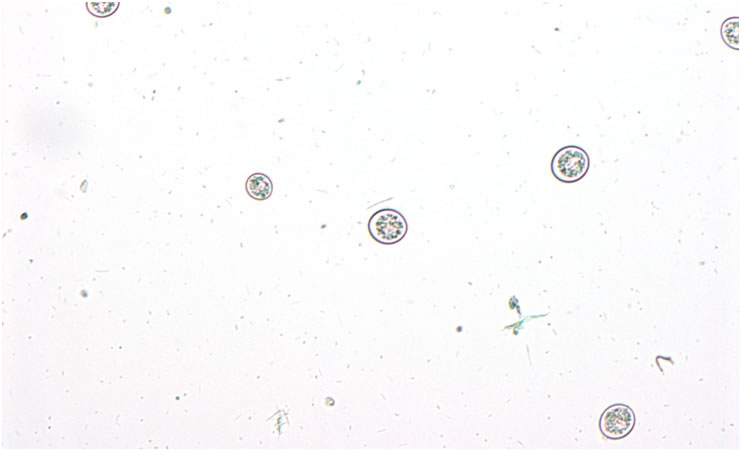Etiology: Eimeria nieschlzi and E. seperata are coccidia infecting rats.
Incidence: Incidence of infection is rare in laboratory rats.
Transmission: Fecal-oral transmission occurs via ingestion of sporulated oocysts. Oocysts require 1-3 days in an oxygenated atmosphere to sporulate.
Distribution:
E. nieschlzi – small intestine
E. seperata – cecum, colon
Clinical Signs: Clinical signs range from none to enteritis which results in anorexia, diarrhea and sometimes death. Eimeria are often part of a multifactorial disease and primarily affect young animals.
Relative pathogenicity:
E. nieschulzi > E. seperata
Diagnosis: Diagnosis is made by performing fecal flotation. Oocysts must be sporulated to speciate. Induce sporulation with time in a moist, oxygenated atmosphere or with 2.5% potassium dichromate solution.
Diagnostic Morphology:
E. nieschlzi: 16-26 x 13-21µm, tapered, with 1 polar granule. No residuum or micropyle.
E. seperata: 10-19 x 10-17 µm with 1-3 polar granules. No residuum or micropyle.
